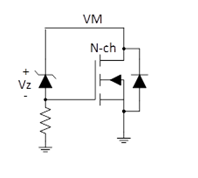Hi.
We have a product for an electric wheelchair.
We do not necessarily want to do regenerative breaking, but when going downhill, the chair will make the motor turn... so if we go fast enough, the motor will generate a voltage higher than the battery... or even higher than all circuit in the system. We need something to protect to safeguard against that.
Would the DRV 8304 have any safeguards for this? Or would we need something external?
What would you recommend here?



